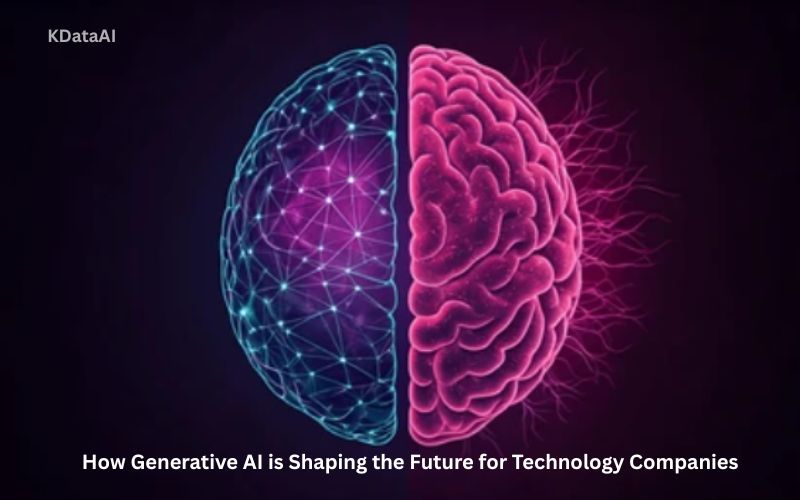Introduction
Generative AI is making waves across the tech world. It creates everything from realistic images to code and text with little human input. Recent breakthroughs in this area are causing big changes in how companies develop products and serve customers.
Why is generative AI so important? Because it can do tasks faster, cheaper, and often better than before. If your goal is to stay ahead in tech, understanding this technology is a must. This article will explore key ways generative AI is transforming the industry and what lies ahead.
The Evolution of Generative AI and Its Technological Foundations
The Rise of Generative AI
Generative AI did not appear overnight. It has grown through many stages over the past decades. Early models could only produce simple patterns or basic text. Fast forward, and today’s models generate images, music, and complex data. Major milestones include the development of neural networks in the 2000s, and the breakthrough of transformer-based models like GPT-3 in 2020.
Underlying Technologies
Generative AI depends on powerful tools like deep learning and neural networks. These algorithms learn from huge amounts of data. Transformer architecture, especially, allows models to understand and produce human-like language. Large datasets and high-powered computers are critical to training these AI systems.
Industry Adoption Trends
Many sectors are jumping in quickly. According to recent research, over 70% of tech companies have already experimented with or adopted generative AI. From finance to healthcare, the demand keeps growing. Industry reports show that investment and innovation in this space are doubling every year.
How Generative AI Is Transforming Product Development and Innovation
Accelerating Creativity and Design
Generative AI enables designers to create prototypes, artworks, or product ideas fast. It helps visualize concepts that might take days otherwise. For example, automotive companies use AI to generate new car designs quickly, saving months in development. Fashion brands also use AI to craft new clothing patterns and styles effortlessly.
Enhancing Software Development
Tools like GitHub Copilot show how AI helps programmers write code faster. These models suggest code snippets, spot bugs, and even automate repetitive tasks. Developers can focus more on core problems instead of mundane chores. This speeds up projects and reduces bugs at the same time.
Reducing Time-to-Market and Costs
Generative AI cuts down research and development cycles. Companies can test many ideas in less time and with fewer resources. Integrating AI into workflows helps teams iterate faster and lower expenses. Want quicker product launches? This is how.
The Impact of Generative AI on Business Operations and Customer Experience
Personalized Customer Interactions
AI-driven chatbots and virtual assistants give personalized support 24/7. They understand customer needs better and respond faster. Retailers like Amazon use AI to suggest products, making shopping easier and more personal. This boosts satisfaction and loyalty.
Data Synthesis and Decision-Making
Synthetic data created by AI allows companies to test new ideas without risking sensitive info. It helps improve predictions and insights. For example, financial firms analyze artificial data to forecast market shifts more accurately. Making smarter choices becomes easier with quality synthetic data.
Operational Efficiency Gains
Routine tasks such as inventory management, invoicing, or scheduling can be automated with AI. These changes free up staff to work on more strategic stuff. Supply chain companies use AI to optimize routes and stock levels, saving money and time.
Ethical, Legal, and Security Considerations for Tech Companies
Ethical Challenges
Generative AI models can sometimes be biased or unfair, reflecting the data they learn from. Transparency is vital. Companies should build systems with fairness and accountability in mind to avoid hurting users or reputation.
Legal and Regulatory Landscape
As this tech grows, legal issues surface. Concerns include intellectual property rights and data privacy. Governments are crafting rules to manage AI use, making compliance more complex. Staying ahead of these changes is key.
Security Risks
Fake images, videos, or malicious content created by AI pose threats. They can mislead or harm people. Companies need strict security measures to detect and prevent misuse. Good practices include robust verification and monitoring systems.
The Future Outlook: Opportunities and Challenges
Emerging Trends and Innovations
Expect to see AI working across multiple modes—images, sounds, and text—together. Zero-shot learning, where models understand new tasks without retraining, will grow more common. These advancements increase versatility and speed.
Strategic Implications for Technology Companies
Early adopters of generative AI can gain a significant edge over rivals. Building responsible AI ecosystems will be essential. Companies that invest in sustainable, ethical AI will build trust and secure long-term success.
Actionable Recommendations
- Invest in research and skilled talent.
- Create clear ethical guidelines for AI use.
- Partner with universities and industry groups to stay up-to-date.
- Regularly monitor AI systems for bias and misuse.
- Focus on transparency and user trust.
Conclusion
Generative AI is changing how tech companies build products, serve customers, and operate efficiently. It offers huge opportunities but comes with risks. To succeed, companies must act now—embracing innovation while practicing responsibility. Continuous learning and ethical principles will keep you ahead in this fast-changing landscape. Staying committed to responsible AI use helps ensure a future where technology benefits everyone.

